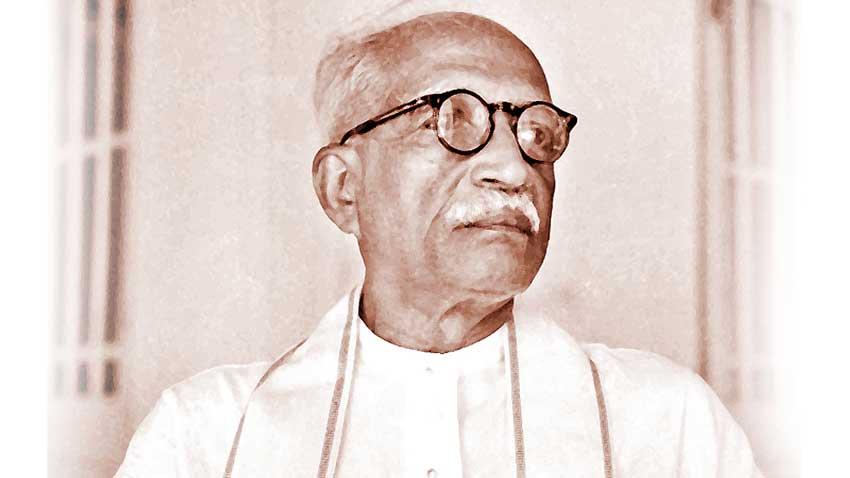Reply To:
Name - Reply Comment

Dr. C. W. W. Kannangara
 On October 01, 1945, in the very month, he was born 135 years ago, Dr. C. W. W. Kannangara, the Minister of Education in the then State Council of Ceylon, implemented the Free Education Act to provide free education to every single child born on this soil. It was hailed as a step in providing ‘lasting value to the nation.’ The State Council Committee on Education, headed by him, made the following epoch-making recommendations, which stunned some of the members in the august assembly of the State Council when they were originally presented in 1943.
On October 01, 1945, in the very month, he was born 135 years ago, Dr. C. W. W. Kannangara, the Minister of Education in the then State Council of Ceylon, implemented the Free Education Act to provide free education to every single child born on this soil. It was hailed as a step in providing ‘lasting value to the nation.’ The State Council Committee on Education, headed by him, made the following epoch-making recommendations, which stunned some of the members in the august assembly of the State Council when they were originally presented in 1943.
Dr. Kannangara was determined to create a new education system for the country that would ensure equal opportunity for every child in the far-off village or in the central city, irrespective of the class, religion, ethnicity or economic status of the family. He realised that education then was not standardised, even though education in vernacular schools was free, with grants provided by the government, and buildings, equipment and even books provided by philanthropists in some instances. As Chairman of the Committee, Dr. Kannangara guided the State Council members in the direction he envisaged with success and received approval of the members to make those recommendations to the State Council.
But he faced stiff opposition from socially and economically privileged groups, in his efforts to establish free education in the country. Surprisingly, several stubborn opponents were among his own colleagues in the Council, who enjoyed perks, privileges and positions offered by the British. When the bill was debated in the Council, according to records, Dr. Kannangara had spoken for six and half hours to win the support of other members to get the bill passed. It is on record that Dudley Senanayake vehemently supported the bill, while his father D. S. Senanayake was not in much favour. When the voting time came Sir Oliver Goonetilleke, H. W. Amarasuriya, J. R. Jayewardene, and several others were joined by Dr. N. M. Perera and Dr. S. A. Wickremasinghe, the well-known Marxist leaders in support. Unlike nowadays, when it came to a national issue, it was most exemplary to note how visionary politicians like Drs. N. M . and S. A. voted with their arch-political rivals for the sake of the country and its people. While such events were taking place inside the chambers of the State Council, outside public campaigns in support of the bill were launched by personalities in the calibre of Dr. E. W. Adikaram, Professor G. P. Malalasekera and Educationist L. H. Mettananda.
Besides Dr. Kannangara’s gift of Free Education to the nation, he established the University of Ceylon as the first-ever University of the country, upgraded the Pirivena Education for the young Buddhist monks and started up 54 Central Colleges in all districts. He was also a pioneering member of the independence movement alongside dozens of other national leaders. Despite all such laurels in possession, he lost the election in his own electorate immediately afterwards. Having won subsequent elections, he remained in active politics until 1956.
In vast contrast to some of today’s politicians, Dr. Kannangara when retired had no wealth and no house and property of his own, and no funds in the bank. His survival was such an issue, that reportedly, he was compelled to appeal to the then Speaker of Parliament for a financial subsidy. The response was quick, in the form of a once and for all grant of Rupees ten thousand and a monthly allowance of Rupees Five Hundred till his death, which occurred on September 23, 1969 at the General Hospital, Colombo. Such was the last stage of life of this unique humanitarian, who was instrumental in providing millions and millions of children of this country, the opportunity to become excellent performers both in their own motherland as well as overseas.